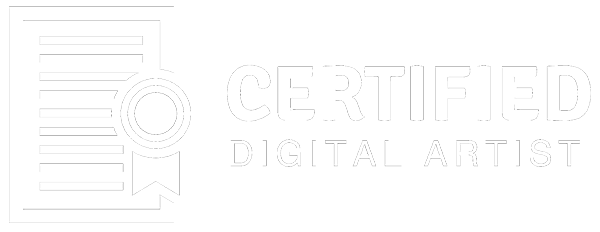What is a Lighting Artist?
Traditionally considered a very technical role, the Lighting Artist or Lighter, also needs to have an eye for colour, tone, atmosphere and composition -understanding how light reflecting on objects in nature and the real world determines how we perceive them. The lighting TD on a game project lights the environments and characters within a game ensuring not only that the game looks amazing, but that key gameplay elements are highlighted.
Entry Level Skills & Capabilities
The following information outlines the exact skills you need to demonstrate as a Certified Digital Artist. You must be proficient and capable of completing all these skills and capabilities.
1. Communication Skills
- Strong communication skills to describe and present your work with confidence.
- Willing to show progress frequently and able to receive and discern feedback objectively
2. General
- Understand how light works and matching CG to real-world lighting
- Ability to composite multiple scene elements together into render
- Ability to replicate real-world lighting in 3D environment
- Ability to normalize the exposure of reference photography and remove the presence of lighting (shadows and highlights)
- Bonus: Capable of neutralizing color from reference images using a Macbeth chart
- Bonus: Understanding of capturing, preparing, editing and using HDRI for global illumination
3. Lookdev/Shading
- Basic knowledge of shader attributes and physical material properties
- Knowledge about physical material/surface properties.
- Understanding of the physics of light, how it affects different materials
- Understand the uses for different specular models and be able to control them
- Artistic and technical ability to create looks for assets.
4. Lighting Setup
- Scrutinising the colours and directions of all light sources in the real-world scene and replicating them in CG
- Ability to create a sky light and sky dome
- Strong setup skills for sun direction, color, and intensity, reflections, and volumetric lighting.
5. Lighting
- Ability to match digital assets into live action plates with lighting and lookdev.
- Build rigs with parents, targets, locators, etc. in a way that allows for the greatest creative flexibility, while also maintaining consistency and intuitive manipulation across shots.
- Ability to work with Arbitrary Output Variables (AOVs) such as diffuse, specular, sub-surface, and light emission.
- Ability to adjust the properties of light to achieve different realistic time of day for both interior and exterior environments
- Understand all controls of a digital light from exposure through to shadow
- Strong understanding of mid point grey, dynamic range, sequence level lighting.
- Understand how the surface of an area light affects the shape of the lighting and shadow sharpness
- Understand how the high and low values in a high-dynamic-range image file change the lighting
- Capable of creating volumetric and atmospheric lighting
- Bonus: Understanding of camera projection techniques
- Bonus: Ability to create and use Object Source Lighting (OSL)
6. Compositing
- Basic concepts of Compositing: Premultiplication, Lens Distortions, Channels, Masks, Operators, Deep Compositing, Depth of Field, Plates, Rotoscoping.
- Understanding color values and how they relate to color space
- Strong understanding of colour and working with different Look Up Tables (LUT)
7. Rendering
- Technical knowledge such as how to reduce noise in various renderers and how to optimize large scenes for rendering.
- Understand the concept of ray tracing and be able to optimise renders
- Capable of rendering non-lighting passes for compositions
- Ability to wrangle assets or elements of a shot from another department to ensure shots are completed to schedule
- Technical knowledge of the renderer and ability to interpret error messages
- Bonus: Understanding of the visual effects pipeline from modelling through animation, texturing, rendering and compositing.
- Bonus: Basic understanding of Physical Based Rendering (PBR)

Software Proficiencies
Ability to use one or more of the following software packages:
- Autodesk Maya
- Gaffer
- Arnold
- Vray
- Mental Ray
- Tractor
- Ptgui
- Linux
- Bonus: Renderman
- Bonus: Nuke
- Bonus: Katana
- Bonus: Houdini
Language Proficiencies
Basic ability to use on or more of the following coding languages:
- Python
- Maya Embedded Language (MEL)
- Bonus: C++
Prerequisites
These skills are equally important in terms of your understanding and ability to do this role. Although they are not skills or knowledge that is officially certified, it will be obvious to recruiters and Certified Digital Artist(CDA) reviewers if you have knowledge in these areas.
Art Fundamentals
- Perspective
- Lighting
- Composition
- Anatomy
- Colour Theory
- Form
Life Skills & Communication
- Thinking Critically
- Communication Skills
- Conflict Management
- Taking initiative
- Collaboration
- Time Management

Portfolio Projects
Roles in Creative Media & Entertainment industries are quite different to traditional roles. As a Digital Artist, you need to prove your creative and technical abilities which requires an online portfolio filled with projects that showcase your work. One of more of the following projects should be included in your digital portfolio to demonstrate your skills and abilities to perform the required skills of this role.
- Environment Lighting: Recreate concept art or visual reference and show how shadows and light color change over time
- Mood Lighting: Create a basic scene and use lighting techniques to show different moods.
- Shot Lighting Showreel: Create a complete shot that includes all elements and how they work together to build the final image. Using the fundamentals of real-world lighting as a basis for CG lighting i.e. back, key, fill, eye lights, and Image Based Lighting.


